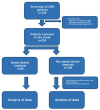Patients' Perceptions Regarding Acceptance of Dental Implants as an Option for the Replacement of Missing Teeth: An Observational Study
- PMID: 38686275
- PMCID: PMC11056823
- DOI: 10.7759/cureus.57232
Patients' Perceptions Regarding Acceptance of Dental Implants as an Option for the Replacement of Missing Teeth: An Observational Study
Abstract
Introduction: Dental implants enhance the self-assurance and overall well-being of individuals by providing oral comfort during mastication and a notable degree of contentment. The objectives of the present study were to assess patients' perception of opting or non-opting for dental implants as a replacement for missing teeth and to determine the correlation between various factors and perceived demand for dental implant treatment.
Materials and methods: A cross-sectional observational study was conducted on 214 partially edentulous individuals aged between 21 and 50 years. These patients sought treatment to replace their missing teeth. The participants were provided with detailed information regarding various options for replacing their missing teeth, including removable prostheses, fixed partial dentures, and dental implants. The researchers recorded and evaluated the reasons behind the patients' decision to opt for or decline dental implant treatment using the chi-squared test. Categorical variables were summarized as percentages (n %). The association between variables and binary data was examined using point biserial correlation, whereas, for continuous data, the Pearson correlation coefficient was employed.
Results: About 65 (30.4%) patients opted for dental implant treatment and 149 (69.6%) patients did not opt for dental implant treatment. Missing teeth were found in 120 women (56.08%) and 94 men (43.92%). The main reason for seeking dental implant treatment was the need for improvement in functions such as chewing in 65 (100%) patients, followed by the need for improvement in oral health in 57 (88%), aesthetics in 54 (83%), need for bone and adjacent teeth preservation in 52 (80%), and durability of dental implants in 46 (71%) patients. The main reasons for not seeking dental implant treatment and opting for fixed prostheses other than dental implants or removable prostheses cost 149 (100%), fear of surgery 132 (91%), underlying health issues 121 (81%), lack of knowledge about dental implants 120 (80.5%), and time management issues 92 (62%). Gender, age, and number of missing teeth showed a negative correlation, whereas level of education, social status, and oral health awareness showed a positive correlation with the perceived need for dental implant treatment.
Conclusion: Dental implant treatment was preferred by 30.4% of patients, which was influenced by gender, sex, level of education, social status, awareness of oral health, and number of missing teeth. Cost, fear of surgery, underlying medical conditions, lack of knowledge, and time management are some reasons for not opting for dental implant treatment.
Keywords: dental implants; observational study; perception; replacement; tooth loss.
Copyright © 2024, Bhagawati et al.
Conflict of interest statement
The authors have declared that no competing interests exist.
Similar articles
-
Perception, sentiments, and the level of awareness toward the dental implant among general population in Sulaimaniyah City, Iraq.BMC Oral Health. 2024 Feb 20;24(1):255. doi: 10.1186/s12903-024-03964-w. BMC Oral Health. 2024. PMID: 38378507 Free PMC article.
-
Awareness, attitudes, need and demand on replacement of missing teeth among a group of partially dentate patients attending a University Dental Hospital.BMC Res Notes. 2017 Jul 27;10(1):334. doi: 10.1186/s13104-017-2655-0. BMC Res Notes. 2017. PMID: 28750652 Free PMC article.
-
Treatment planning: implant-supported partial overdentures.J Calif Dent Assoc. 2005 Apr;33(4):313-6. J Calif Dent Assoc. 2005. PMID: 15915882
-
Oral health-related quality of life of patients rehabilitated with fixed and removable implant-supported dental prostheses.Periodontol 2000. 2022 Feb;88(1):201-237. doi: 10.1111/prd.12419. Periodontol 2000. 2022. PMID: 35103325 Free PMC article. Review.
-
The rationale for the introduction of implant dentistry into the dental curriculum.Eur J Dent Educ. 2009 Feb;13 Suppl 1:19-23. doi: 10.1111/j.1600-0579.2008.00540.x. Eur J Dent Educ. 2009. PMID: 19281511
Cited by
-
Factors influencing dental care services utilization in India using Andersen health behaviour model: a systematic review.BMC Health Serv Res. 2025 Jul 29;25(1):988. doi: 10.1186/s12913-025-13252-0. BMC Health Serv Res. 2025. PMID: 40730996 Free PMC article.
-
Exploring the knowledge and attitudes of dentists towards immediate implant placements.Bioinformation. 2025 May 31;21(5):1207-1210. doi: 10.6026/973206300211207. eCollection 2025. Bioinformation. 2025. PMID: 40822797 Free PMC article.
-
Predicting interactome networks of up/down regulated proteins and drug-gene interaction analysis associated with peri-implantitis.Dent Res J (Isfahan). 2025 Jan 24;22:3. doi: 10.4103/drj.drj_288_24. eCollection 2025. Dent Res J (Isfahan). 2025. PMID: 40028501 Free PMC article.
-
Knowledge and Perception about Dental Implants, Bone Grafting and Complications in Population of Delhi NCR - An Evaluative Study.Ann Maxillofac Surg. 2025 Jan-Jun;15(1):83-88. doi: 10.4103/ams.ams_220_24. Epub 2025 May 5. Ann Maxillofac Surg. 2025. PMID: 40765877 Free PMC article.
References
-
- Knowledge and awareness of dental implants as a treatment choice in adult population in South India: a hospital-based study. Mayya A, D'Souza J, George AM, Shenoy K, Jodalli P, Mayya SS. Indian J Dent Res. 2018;29:263–267. - PubMed
-
- Perception, awareness, and practice about missing teeth, prosthetic options, and knowledge about dental implants as a treatment modality in the adult population of Jharkhand state: a hospital-based study. Gupta V, Singh S, Singhal P, Gupta P, Gupta B, Kumar S. J Pharm Bioallied Sci. 2022;14:0–8. - PMC - PubMed
-
- Factors affecting demand for dental implant treatment: a patient-centered observational study. Yakar N, Duruel O, Guncu GN, et al. https://www.perioiap.org/publications/59-january-2022/261-factors-affect... J Int Academy Periodontology. 2022;24:46–52.
LinkOut - more resources
Full Text Sources

